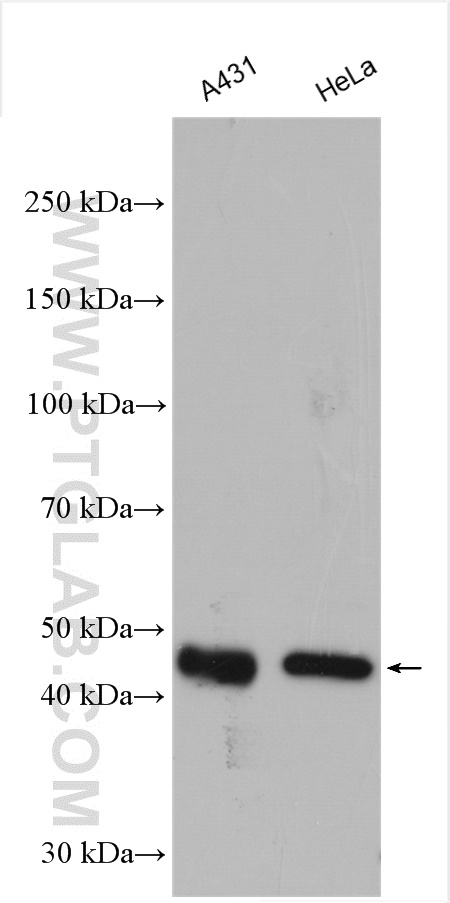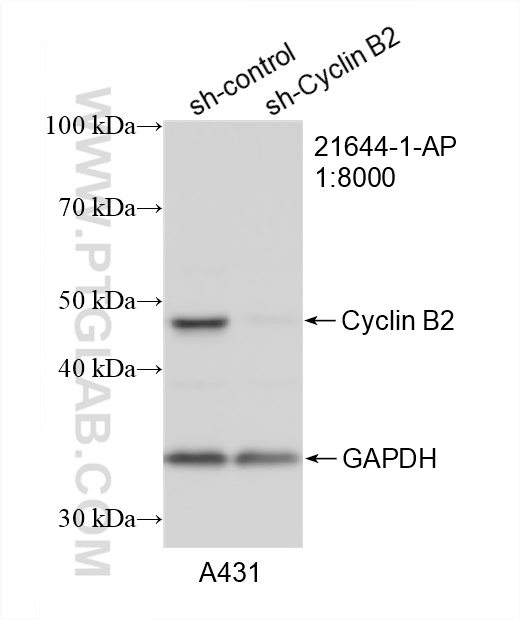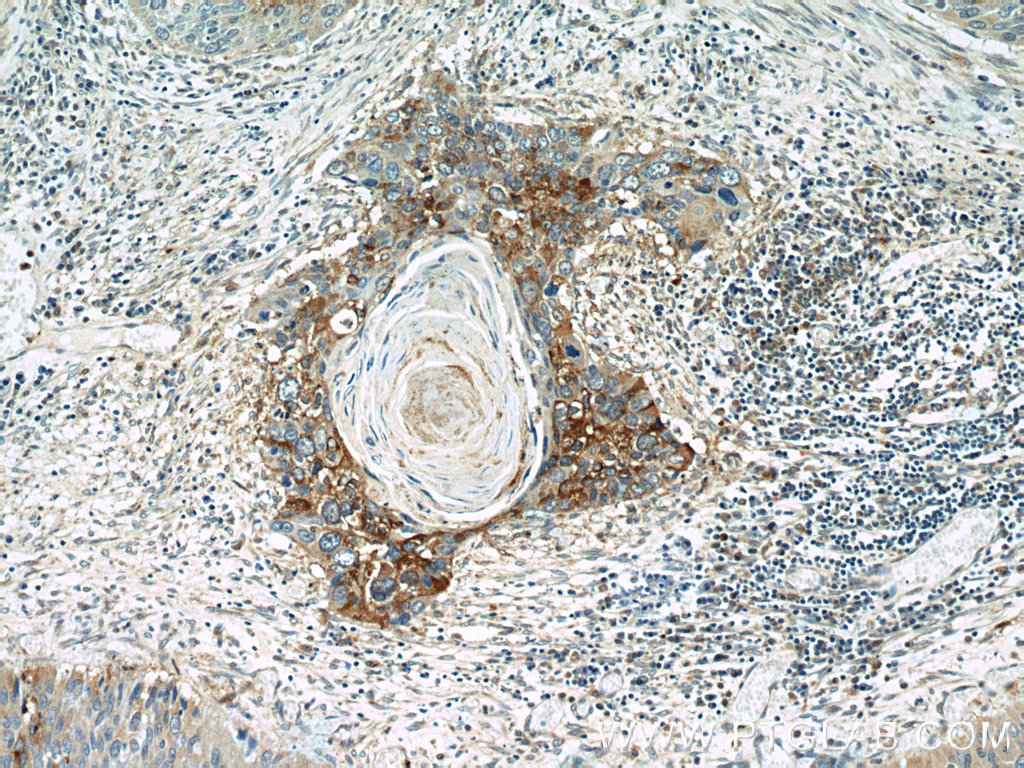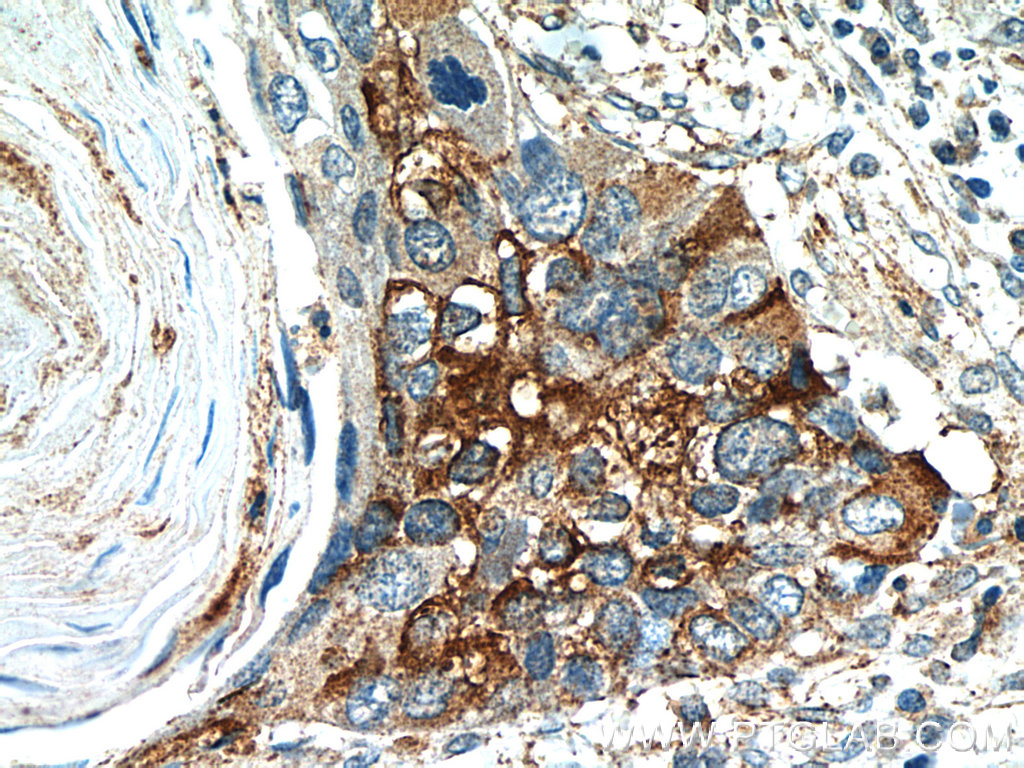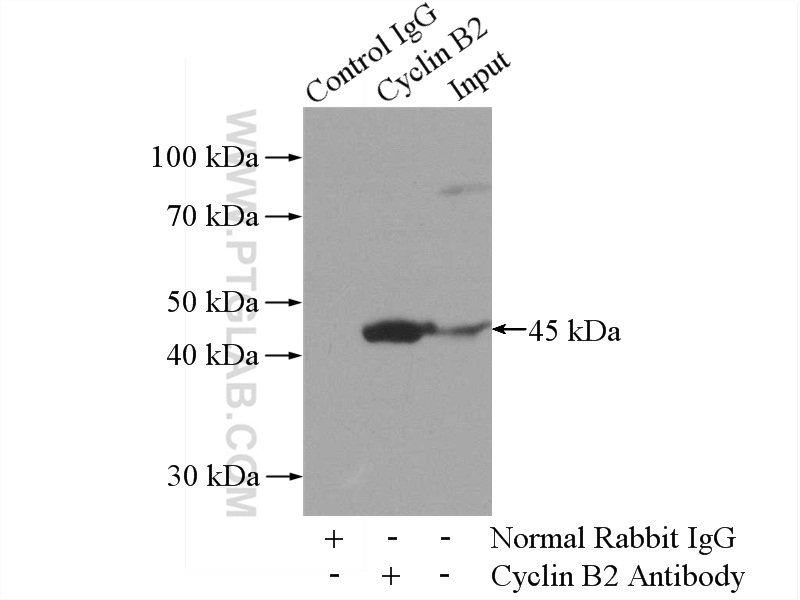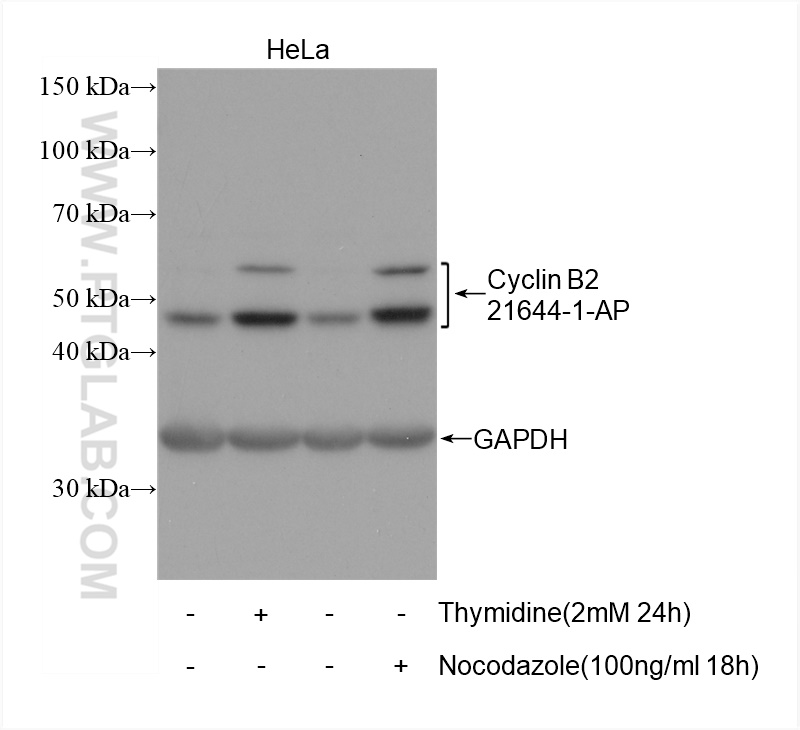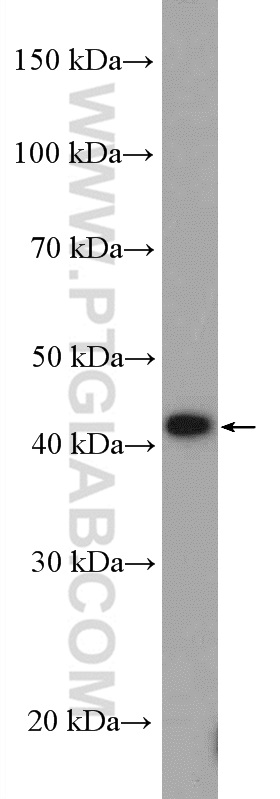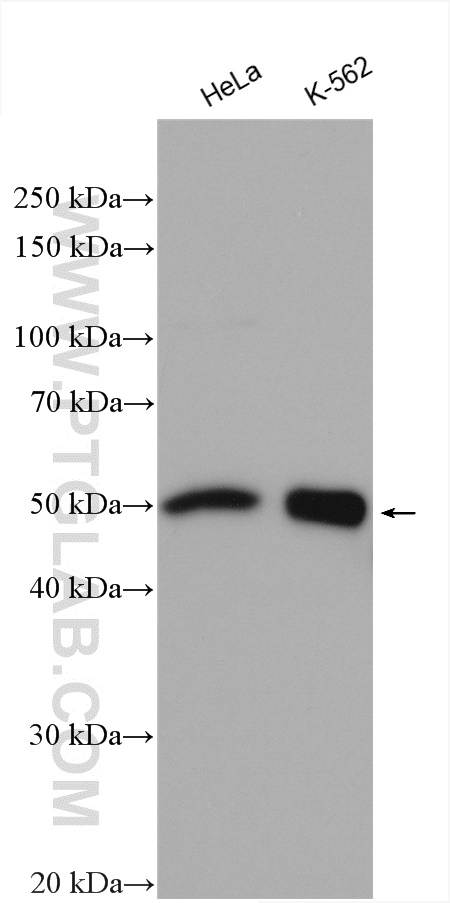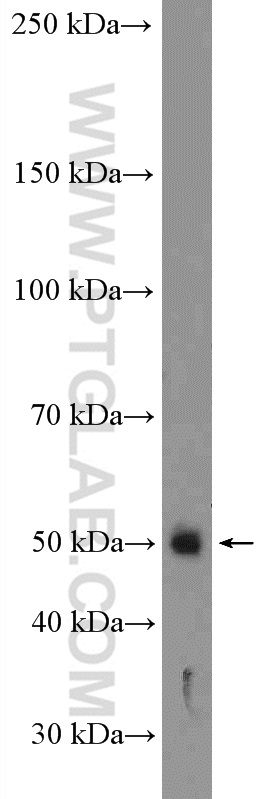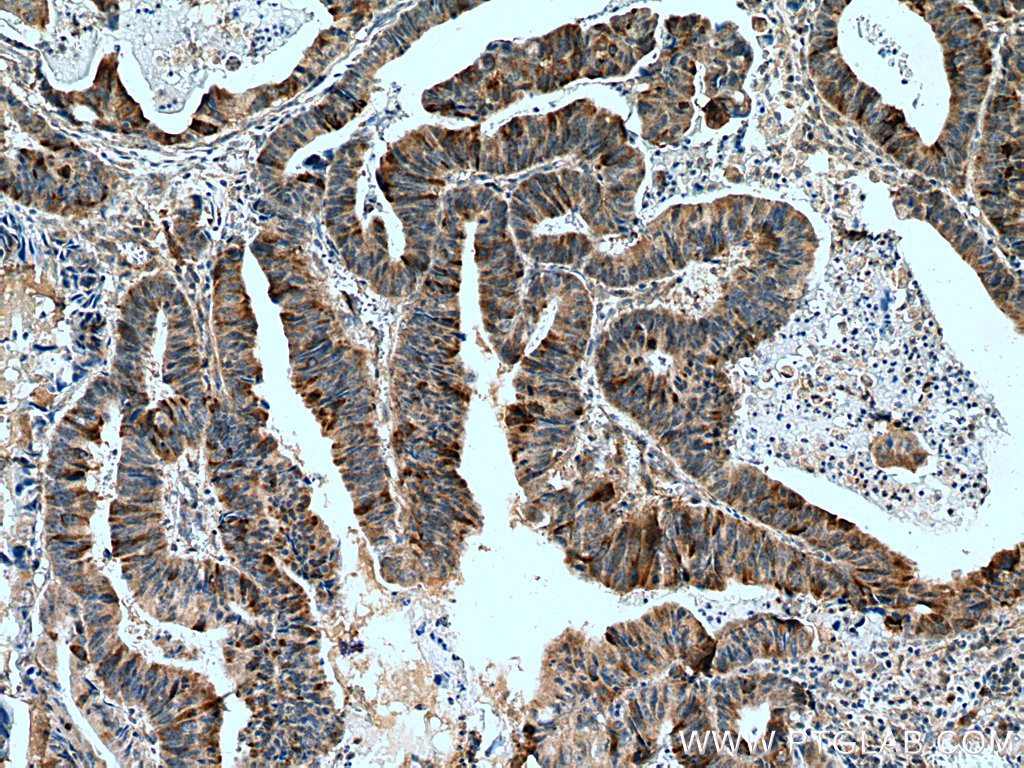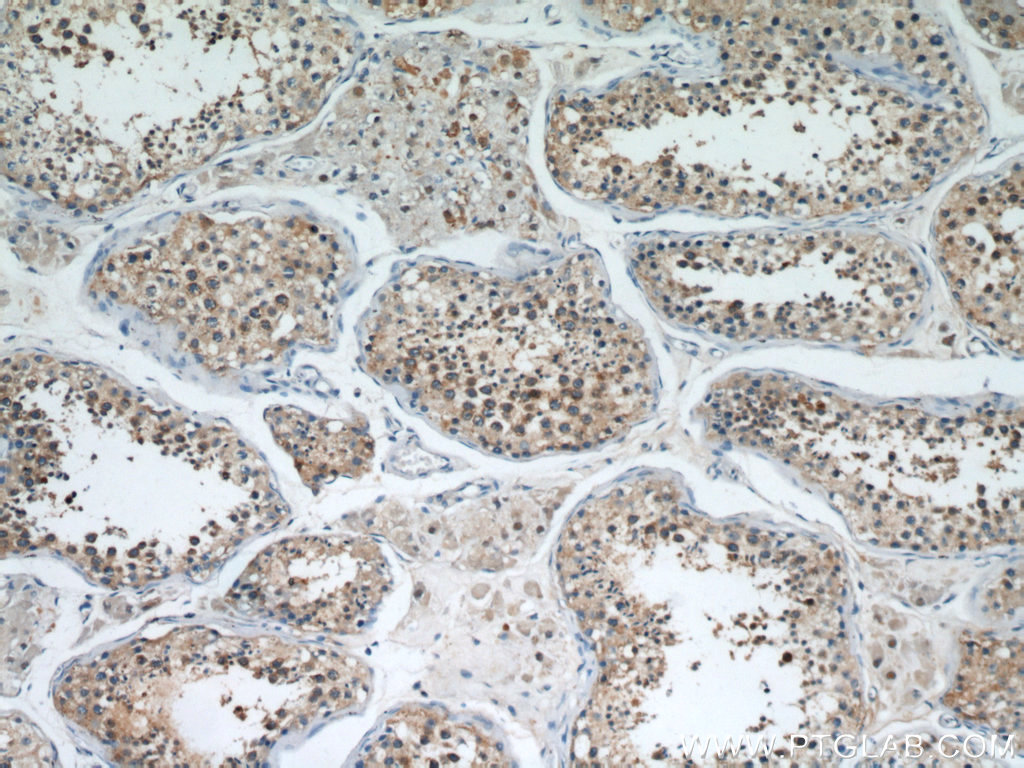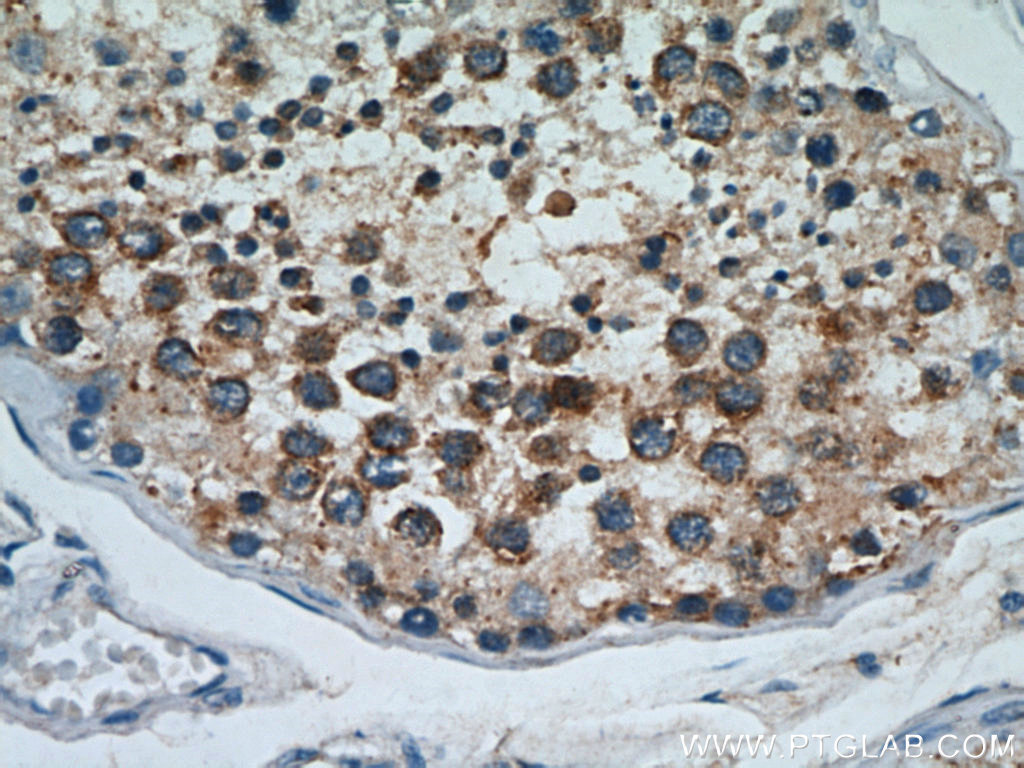验证数据展示
经过测试的应用
| Positive WB detected in | A431 cells, DU 145 cells, rat testis tissue, HeLa cells, K-562 cells |
| Positive IP detected in | A431 cells |
| Positive IHC detected in | human cervical cancer tissue, human testis tissue, human colon cancer tissue Note: suggested antigen retrieval with TE buffer pH 9.0; (*) Alternatively, antigen retrieval may be performed with citrate buffer pH 6.0 |
推荐稀释比
| 应用 | 推荐稀释比 |
|---|---|
| Western Blot (WB) | WB : 1:2000-1:12000 |
| Immunoprecipitation (IP) | IP : 0.5-4.0 ug for 1.0-3.0 mg of total protein lysate |
| Immunohistochemistry (IHC) | IHC : 1:20-1:200 |
| It is recommended that this reagent should be titrated in each testing system to obtain optimal results. | |
| Sample-dependent, Check data in validation data gallery. | |
产品信息
21644-1-AP targets Cyclin B2 in WB, IHC, IP, ELISA applications and shows reactivity with human, mouse, rat samples.
| 经测试应用 | WB, IP, IHC, ELISA Application Description |
| 文献引用应用 | WB, IHC, IP |
| 经测试反应性 | human, mouse, rat |
| 文献引用反应性 | human, mouse |
| 免疫原 | Cyclin B2 fusion protein Ag16329 种属同源性预测 |
| 宿主/亚型 | Rabbit / IgG |
| 抗体类别 | Polyclonal |
| 产品类型 | Antibody |
| 全称 | cyclin B2 |
| 别名 | CCNB2, cyclin B2, G2/mitotic specific cyclin B2, HsT17299 |
| 计算分子量 | 398 aa, 45 kDa |
| 观测分子量 | 51 kDa |
| GenBank蛋白编号 | BC105086 |
| 基因名称 | Cyclin B2 |
| Gene ID (NCBI) | 9133 |
| RRID | AB_10755304 |
| 偶联类型 | Unconjugated |
| 形式 | Liquid |
| 纯化方式 | Antigen affinity purification |
| UNIPROT ID | O95067 |
| 储存缓冲液 | PBS with 0.02% sodium azide and 50% glycerol , pH 7.3 |
| 储存条件 | Store at -20°C. Stable for one year after shipment. Aliquoting is unnecessary for -20oC storage. |
背景介绍
Cyclin B2 (CCNB2) is a member of cyclin family proteins, which regulate the activities of cyclin dependent kinases (CDKs) and different cyclins function spatially and temporally in specific phases of the cell cycle. Cyclin B2 serves a key role in progression of G2/M transition. Cyclin B2 has been found to be up-regulated in a variety of human cancers, such as adrenocortical carcinoma, breast carcinoma, colorectal adenocarcinoma, pituitary adenoma and gastric cancer. The aberrant expression of Cyclin B2 deregulates spindle checkpoints in the cell cycle and results in chromosomal instability (CIN), one of the signature phenotypes of most cancers. Moreover, serum circulating Cyclin B2 mRNA expression has been found increased in cancer patients and associated with cancer stage and metastasis status. Cyclin B2 can be detected double bands (PMID:1651338).
实验方案
| Product Specific Protocols | |
|---|---|
| WB protocol for Cyclin B2 antibody 21644-1-AP | Download protocol |
| IHC protocol for Cyclin B2 antibody 21644-1-AP | Download protocol |
| IP protocol for Cyclin B2 antibody 21644-1-AP | Download protocol |
| Standard Protocols | |
|---|---|
| Click here to view our Standard Protocols |
发表文章
| Species | Application | Title |
|---|---|---|
Phytomedicine Ganoderma lucidum polysaccharide inhibits HSC activation and liver fibrosis via targeting inflammation, apoptosis, cell cycle, and ECM-receptor interaction mediated by TGF-β/Smad signaling | ||
EMBO Rep Mad2 promotes Cyclin B2 recruitment to the kinetochore for guiding accurate mitotic checkpoint.
| ||
Oxid Med Cell Longev Therapy-resistant and -sensitive lncRNAs, SNHG1 and UBL7-AS1 promote glioblastoma cell proliferation. | ||
Elife Elevated FBXO45 promotes liver tumorigenesis through enhancing IGF2BP1 ubiquitination and subsequent PLK1 upregulation. | ||
Oncotarget The synthetic antihyperlipidemic drug potassium piperate selectively kills breast cancer cells through inhibiting G1-S-phase transition and inducing apoptosis. | ||
Ecotoxicol Environ Saf Disruption of mitochondrial redox homeostasis as a mechanism of antimony-induced reactive oxygen species and cytotoxicity. |
